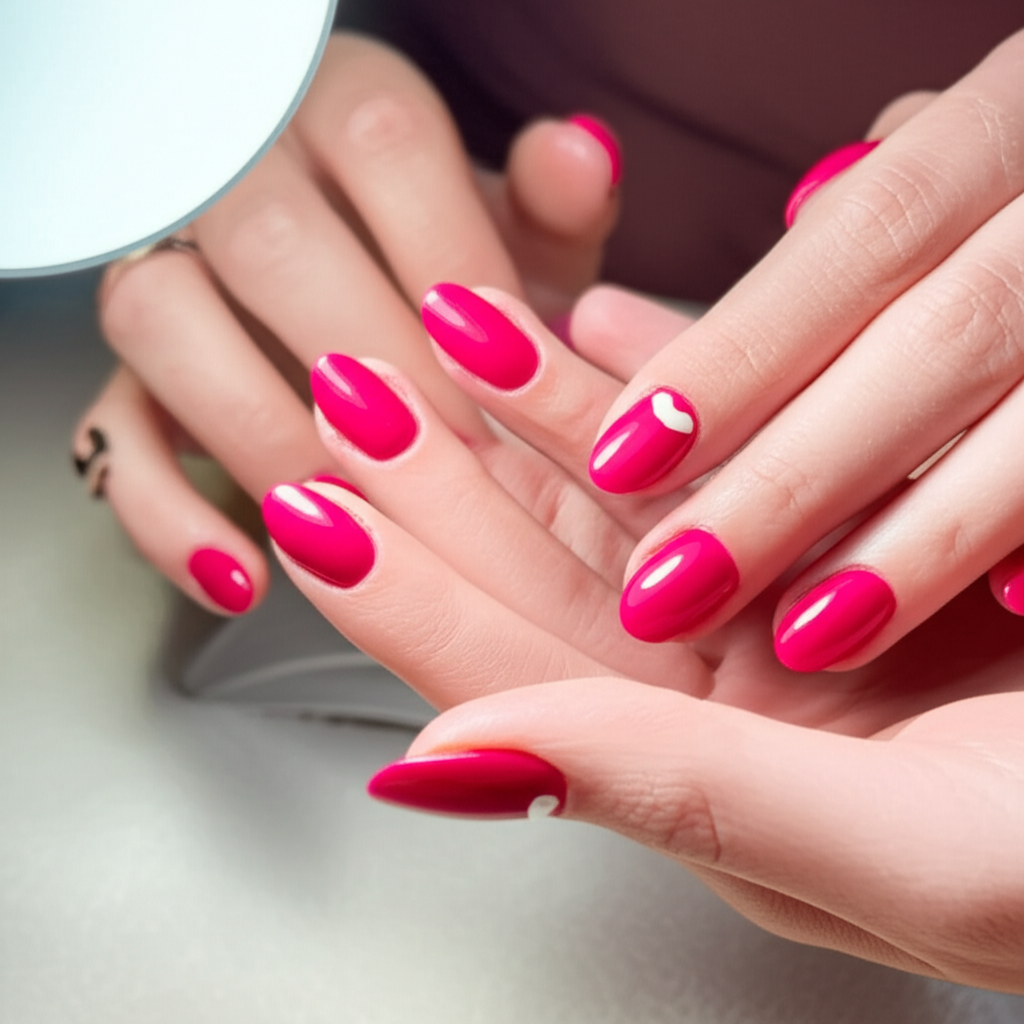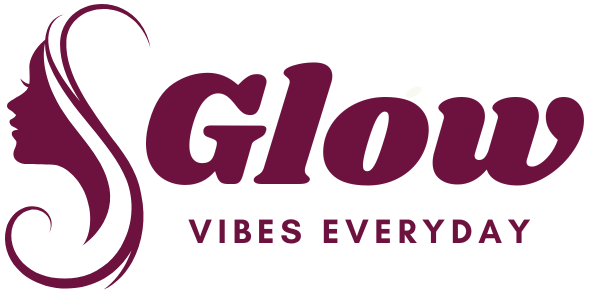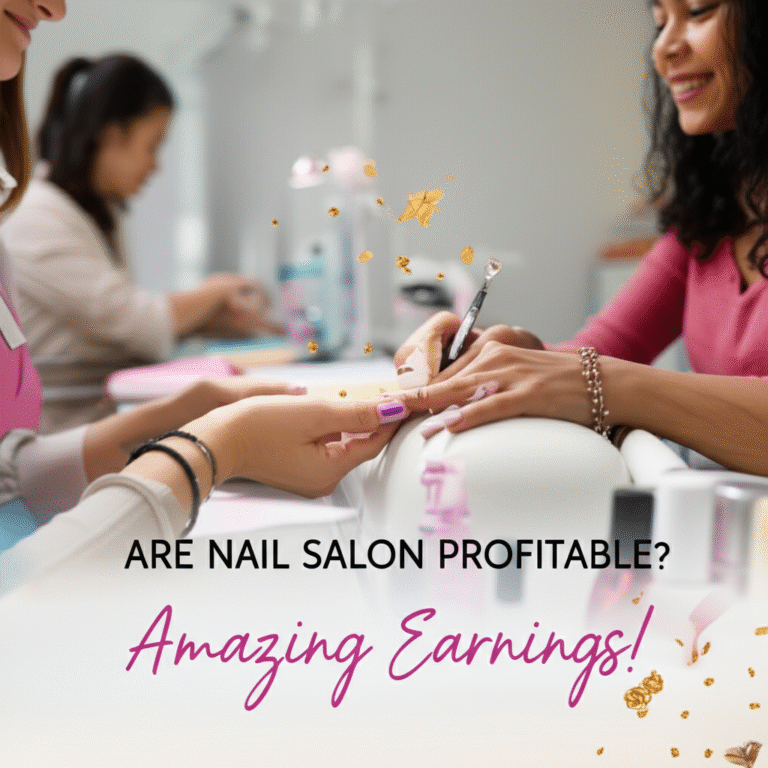Here’s a breakdown of how to create content for the topic “Are Nail Salons Profitable? Amazing Earnings!” following your detailed instructions.
—
A. Bolded Quick Summary (Top of Article)
Yes, nail salons can be incredibly profitable! With smart business strategies, excellent client service, and a focus on high-demand services like gel manicures and nail art, salon owners can achieve significant earnings. Key to success lies in managing costs, building a loyal clientele, and offering premium experiences that justify higher prices.
—
B. Intro Paragraph
Dreaming of a career where creativity meets entrepreneurship, and your passion for beautiful nails translates into a thriving business? Many aspiring nail technicians and salon owners wonder, “Are nail salons profitable?” It’s a common question, especially when navigating the initial investment and the competitive beauty landscape. The frustration often stems from uncertainty about revenue streams, overhead costs, and how to truly stand out. But rest assured, the nail industry offers substantial earning potential for those who understand the market and operate with a business-savvy approach. Let’s dive deep into the financial realities and uncover the secrets to a highly profitable nail salon, so you can confidently build your dream business and enjoy amazing earnings.
—
C. Main Article Writing Instructions
Are Nail Salons Profitable? Unlocking Amazing Earnings in the Beauty Industry
Are nail salons profitable? This is the golden question on the minds of many aspiring entrepreneurs and seasoned beauty professionals alike. The allure of a creative, client-facing business often sparks dreams of financial independence and a fulfilling career. While the vibrant world of nail art and meticulous manicures can indeed be a lucrative venture, the path to profitability requires more than just a steady hand and a keen eye for design. It demands a solid understanding of business principles, strategic planning, and a commitment to delivering exceptional client experiences.
The beauty industry, and the nail sector within it, is a dynamic and ever-evolving market. From the latest gel polish innovations to intricate nail art trends, staying ahead requires constant learning and adaptation. For salon owners, this translates into managing a complex ecosystem of services, products, staff, and overheads. The good news? When managed effectively, nail salons are not just profitable; they can generate truly amazing earnings, offering a rewarding financial return for dedicated professionals.
This comprehensive guide will demystify the financial landscape of nail salons. We’ll explore the various revenue streams, essential cost considerations, pricing strategies, and the key factors that contribute to a salon’s bottom line. Whether you’re a seasoned nail technician looking to open your own establishment or a client curious about the business behind your beloved salon, you’ll gain invaluable insights into how these spaces flourish and achieve remarkable success.
Understanding the Revenue Streams in a Nail Salon

The profitability of a nail salon hinges on a diverse array of services and product sales. While basic manicures and pedicures form the foundation, a truly successful salon diversifies its offerings to cater to a wider clientele and capture higher profit margins.
Core Nail Services:
Manicures & Pedicures: These are the bread and butter. Offering standard, gel, dip powder, and acrylic services provides a range of price points.
Nail Enhancements: Acrylics, gels, and dip powder extensions are high-demand services that command higher prices due to the skill and materials involved.
Nail Art & Customization: Intricate designs, hand-painted art, 3D embellishments, and custom color mixes are significant profit drivers. Clients are willing to pay a premium for unique, personalized nail looks.
Nail Repair & Maintenance: Offering services like cuticle care, nail strengthening treatments, and simple repairs adds to the service portfolio and client retention.
Retail Product Sales:
Nail Polish & Lacquers: High-quality brands, including gel polishes, can be retailed for home use.
Nail Care Products: Cuticle oils, hand creams, nail files, buffers, and specialized treatments are excellent add-on sales.
Nail Art Supplies: For the DIY enthusiast, offering a curated selection of glitters, gems, stamping plates, and tools can be a valuable revenue stream.
Promotional Bundles: Creating gift sets or bundled product deals can encourage larger purchases.
Additional Services & Offerings:
Hand & Foot Treatments: Paraffin dips, exfoliation scrubs, and massage services elevate the salon experience and increase ticket averages.
Gift Certificates: A consistent source of revenue, especially during holiday seasons.
Membership Programs/Loyalty Cards: Encouraging repeat business through discounted services or exclusive perks can boost recurring income.
Special Event Packages: Bridal nail packages, prom specials, or birthday party deals can attract specific client segments.
Pro Tip: Upselling is key! Train your staff to suggest complementary services or retail products at the point of sale. For example, after a gel manicure, recommend a cuticle oil for at-home care.
The Financial Backbone: Understanding Salon Costs
To truly grasp “Are nail salons profitable?”, we must dissect the expenses involved. Effective cost management is crucial for maximizing earnings.
Startup Costs (Initial Investment):
Leasehold Improvements/Renovations: Creating an inviting and functional salon space.
Equipment: Manicure tables, pedicure chairs, UV/LED lamps, sterilization equipment, ventilation systems, reception desk, waiting area furniture.
Initial Inventory: Polishes, gels, acrylics, files, brushes, cleaning supplies, retail products.
Licensing & Permits: Business licenses, health permits, cosmetology licenses for staff.
Marketing & Branding: Website development, signage, initial advertising.
Ongoing Operational Costs (Monthly/Annual Expenses):
Rent/Mortgage: Often the largest fixed expense.
Utilities: Electricity, water, internet, phone.
Salaries & Wages: For nail technicians, receptionists, and potentially a manager. This includes payroll taxes and benefits.
Product & Supply Costs: Replenishing polishes, gels, acrylics, disposables (files, buffers, cotton pads), cleaning and sanitizing agents.
Marketing & Advertising: Social media ads, local promotions, website maintenance.
Insurance: Liability insurance, property insurance.
Software & Technology: Appointment booking systems, POS systems, accounting software.
Professional Development: Training for staff on new techniques or products.
Loan Repayments: If initial startup was financed.
Taxes: Business income tax, sales tax.
Table 1: Sample Monthly Operating Expenses for a Small Nail Salon
| Expense Category | Estimated Monthly Cost | Notes |
| :——————— | :——————— | :——————————————————- |
| Rent | $1,500 – $5,000+ | Varies significantly by location and size. |
| Utilities | $200 – $600 | Includes electricity, water, internet, phone. |
| Staff Salaries | $4,000 – $10,000+ | Based on number of technicians and hourly rates. |
| Product & Supplies | $500 – $2,000 | Depends on service volume and product choices. |
| Marketing & Advertising| $100 – $500 | Can be scaled up or down. |
| Insurance | $100 – $300 | Crucial for protecting the business. |
| Software/Technology | $50 – $200 | Booking systems, POS. |
| Miscellaneous | $100 – $300 | Unexpected repairs, office supplies, etc. |
| Total Estimated | $6,550 – $18,900+ | This is a broad estimate; actual costs will vary. |
Myth Buster: “Nail technicians only earn minimum wage.”
This is a misconception. While base wages are often set, skilled nail technicians can significantly boost their income through commission on services and retail sales, tips, and potentially booth rental income if they own their station. Many highly sought-after artists earn well above average.
Pricing Strategies for Maximum Profitability
Determining the right prices for your services is critical. It’s a delicate balance between attracting clients and ensuring you cover costs while generating a healthy profit.
Cost-Plus Pricing: Calculate the cost of providing a service (including labor, materials, and overhead allocation) and add a desired profit margin.
Value-Based Pricing: Price services based on the perceived value to the customer. High-demand services, intricate nail art, or specialized treatments can command higher prices due to their perceived uniqueness and skill required.
Competitor-Based Pricing: Research what other salons in your area are charging for similar services. While you don’t want to be the cheapest, you need to be competitive.
Tiered Pricing: Offer different levels of service at varying price points. For example, a basic manicure vs. a deluxe spa manicure with added treatments.
Pro Tip: Clearly display your prices and have a system for clients to easily understand what is included in each service. Transparency builds trust.
Factors Driving Nail Salon Profitability
Several key elements contribute to a nail salon’s financial success:
1. Location, Location, Location: High-traffic areas, proximity to complementary businesses (e.g., hair salons, spas), and accessibility for your target demographic significantly impact footfall and client acquisition.
2. Exceptional Client Experience: Beyond just beautiful nails, clients value a clean, comfortable, and welcoming atmosphere. Friendly staff, personalized attention, and consistent quality build loyalty.
3. Skilled and Professional Staff: Investing in ongoing training for your technicians ensures they are proficient in the latest techniques and can offer high-quality services. Happy, well-trained staff are more productive and contribute to a positive client experience.
4. Effective Marketing and Branding: A strong online presence (website, social media), engaging content showcasing your work, local advertising, and referral programs are vital for attracting new clients and retaining existing ones. High-quality images of nail art are particularly crucial for platforms like Instagram and Pinterest.
5. Inventory Management: Efficiently managing your stock of polishes, gels, and supplies prevents waste and ensures you always have what you need. Negotiating with suppliers can also impact your cost of goods sold.
6. Service Specialization: While diversification is good, specializing in a niche like advanced nail art, natural nail care, or specific enhancement types can attract a dedicated clientele willing to pay a premium.
7. Client Retention Strategies: Loyalty programs, rebooking incentives, birthday discounts, and excellent customer service encourage clients to return regularly, creating a predictable income stream.
8. Operational Efficiency: Streamlining appointment booking, managing staff schedules effectively, and maintaining efficient cleaning and sterilization protocols all contribute to smooth operations and cost savings.
External Link: For more on business management in the beauty industry, check out resources from the Professional Beauty Association (https://www.probeauty.org/).
The Art of Nail Art: A Significant Profit Driver
Nail art is no longer a niche offering; it’s a major component of modern nail salon profitability. Clients are increasingly seeking unique, personalized designs that express their individuality.
High Perceived Value: Intricate designs require specialized skills, tools, and time, justifying higher prices.
Social Media Appeal: Stunning nail art is highly shareable on platforms like Instagram and Pinterest, acting as organic marketing for your salon.
Client Loyalty: Offering exclusive or custom nail art can build a dedicated following of clients who return specifically for your artistic talents.
Pro Tip: Invest in high-quality nail art supplies like specialized brushes, pigments, foils, and gems. Offer tiered pricing for nail art based on complexity.
Are Nail Salon Profitable? Calculating Potential Earnings
Let’s look at a simplified example to illustrate the earning potential.
Scenario: A small salon with 3 nail technicians.
Average Service Price: $50 (e.g., a gel manicure with basic art)
Clients per Technician per Day: 4
Operating Days per Week: 6
Weeks per Month: 4
Calculation:
Clients per Technician per Month: 4 clients/day 6 days/week 4 weeks/month = 96 clients
Total Salon Clients per Month: 96 clients/technician 3 technicians = 288 clients
Gross Revenue per Month: 288 clients $50/client = $14,400
Now, let’s factor in estimated monthly expenses (using the lower end of our previous estimate for a small operation):
Estimated Monthly Expenses: $7,000 (Rent, utilities, supplies, minimal marketing, etc.)
Estimated Monthly Profit: $14,400 (Gross Revenue) – $7,000 (Expenses) = $7,400
This is a very basic illustration. Factors like higher service prices, retail sales, more technicians, longer operating hours, and higher client volume can significantly increase this profit. A salon offering more premium services like acrylic extensions, intricate nail art, and selling retail products could easily double or triple this gross revenue.
Internal Link: Interested in mastering specific techniques? Check out our guide on Advanced Gel Manicure Techniques.
Myth Busting: Common Nail Salon Misconceptions
Myth: Nail salons are just about painting nails.
Reality: Profitability comes from a combination of technical skill, client service, business management, and retail sales. It’s a multifaceted business.
Myth: You need a huge initial investment to be profitable.
Reality: While a good setup is important, starting smaller (e.g., a home-based salon, a single booth rental) can significantly reduce startup costs and allow you to build capital before expanding.
Myth: Profitability depends solely on the number of clients.
Reality: While client volume is important, average ticket price, retail sales, and client retention are equally, if not more, crucial for sustainable profitability.
Frequently Asked Questions (FAQ)
Q1: What is the average profit margin for a nail salon?
A1: Profit margins can vary widely, but successful nail salons typically aim for a net profit margin of 10-20% after all expenses are paid. Some high-end or specialized salons may achieve higher.
Q2: How much can a nail technician earn in a salon?
A2: Earnings vary based on skill, location, commission structure, tips, and whether they rent a booth. Many experienced technicians can earn $40,000 – $70,000+ annually, with top artists earning significantly more.
Q3: What are the biggest expenses for a nail salon?
A3: Typically, rent, payroll (salaries/wages), and product/supply costs are the largest ongoing expenses.
Q4: Is it better to own a salon or rent a booth?
A4: Owning a salon offers greater control and potential for higher overall profit but comes with higher risk and responsibility. Renting a booth offers more autonomy for the technician with lower overhead.
Q5: How important is retail sales for nail salon profitability?
A5: Retail sales can significantly boost profit margins as products often have higher markups than services. It’s an essential component of a profitable salon.
Q6: What are the most profitable services in a nail salon?
A6: Services requiring specialized skills and higher-value materials, such as acrylic or gel extensions, complex nail art, and premium spa manicures/pedicures, generally offer the highest profit margins.
Conclusion: The Profitable Potential of Your Nail Business
So, are nail salons profitable? The answer is a resounding yes, with the potential for amazing earnings when approached with a strategic and business-minded perspective. By focusing on diverse revenue streams, managing costs diligently, offering exceptional client experiences, and embracing the artistry that drives demand, salon owners can build a financially successful and deeply rewarding business. The key lies in understanding the market, investing in your skills and your team, and consistently delivering quality that keeps clients coming back.
—
Meta Description: Discover if nail salons are profitable and how to achieve amazing earnings. Learn key revenue streams, cost management, and strategies for a successful nail business.
—
Image Placeholders & Pinterest Ideas:
Image Placeholder 1: A beautifully organized nail station with various polishes, tools, and a UV lamp.
Pinterest Idea: “Salon Organization Goals: How to Set Up a Profitable Nail Station” (Alt text: Organized nail technician station with colorful polishes and professional tools)
Image Placeholder 2: A collage of intricate and artistic nail designs (e.g., floral, abstract, gemstone accents).
Pinterest Idea: “Nail Art Profit Boosters: High-Demand Designs for Your Salon” (Alt text: Collage of stunning and intricate nail art designs)
Image Placeholder 3: A split image showing a basic manicure before and a detailed, artistic manicure after.
Pinterest Idea: “From Basic to Brilliant: Transforming Nails for Higher Profits” (Alt text: Before and after comparison of a simple manicure and an elaborate nail art design)
Image Placeholder 4: A table comparing different types of nail enhancements (e.g., gel, acrylic, dip powder) with pricing and profit potential.
Pinterest Idea: “Nail Service Profitability Guide: Which Services Earn the Most?” (Alt text: Comparison table of nail enhancement services and their profit potential)
Image Placeholder 5: A smiling nail technician interacting with a happy client.

